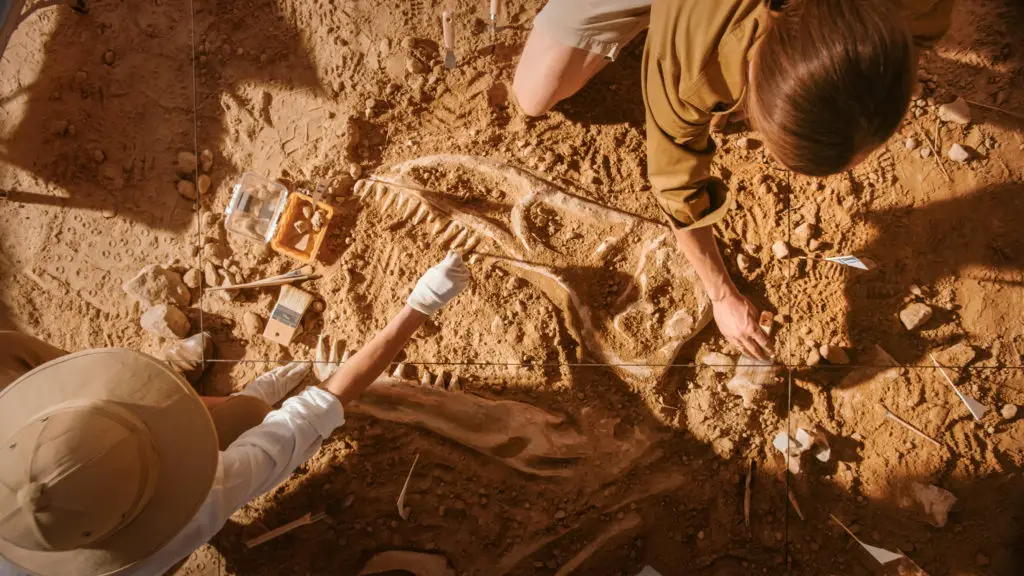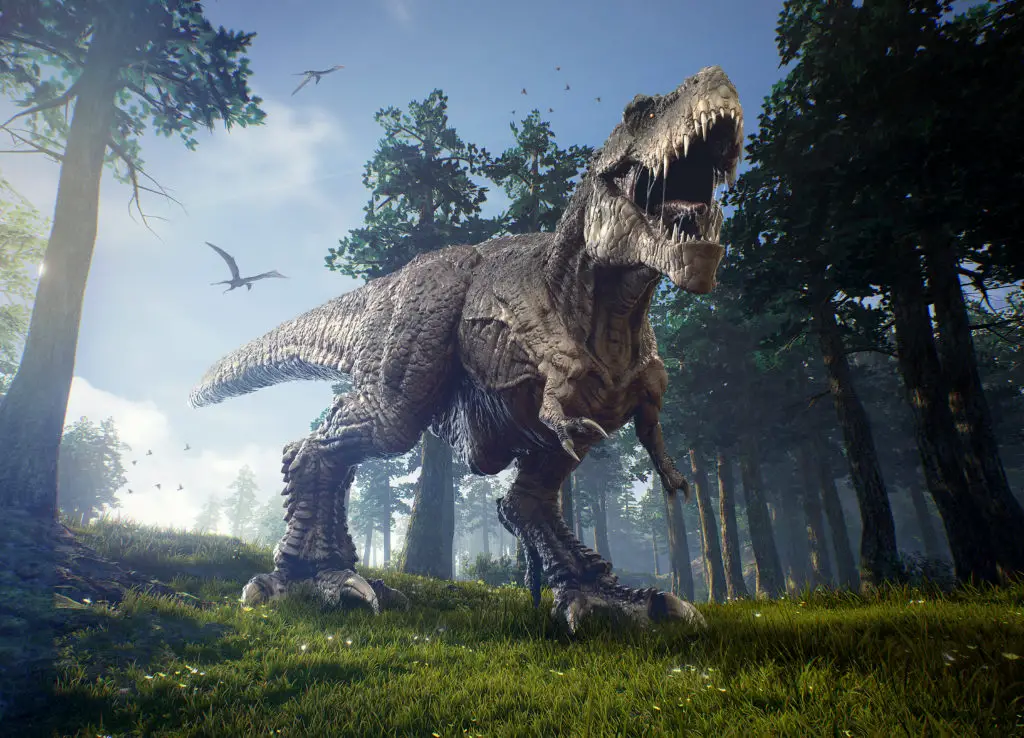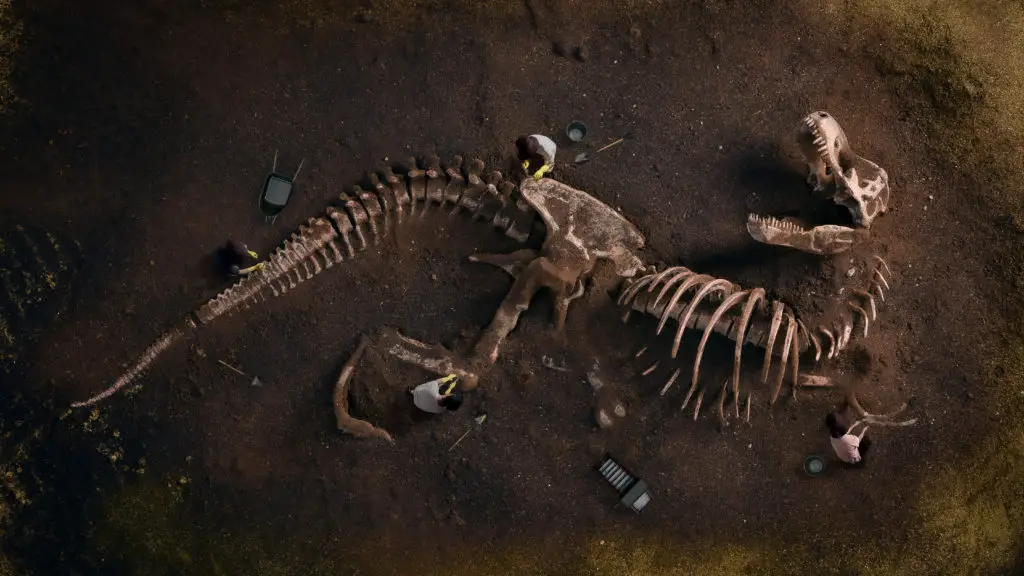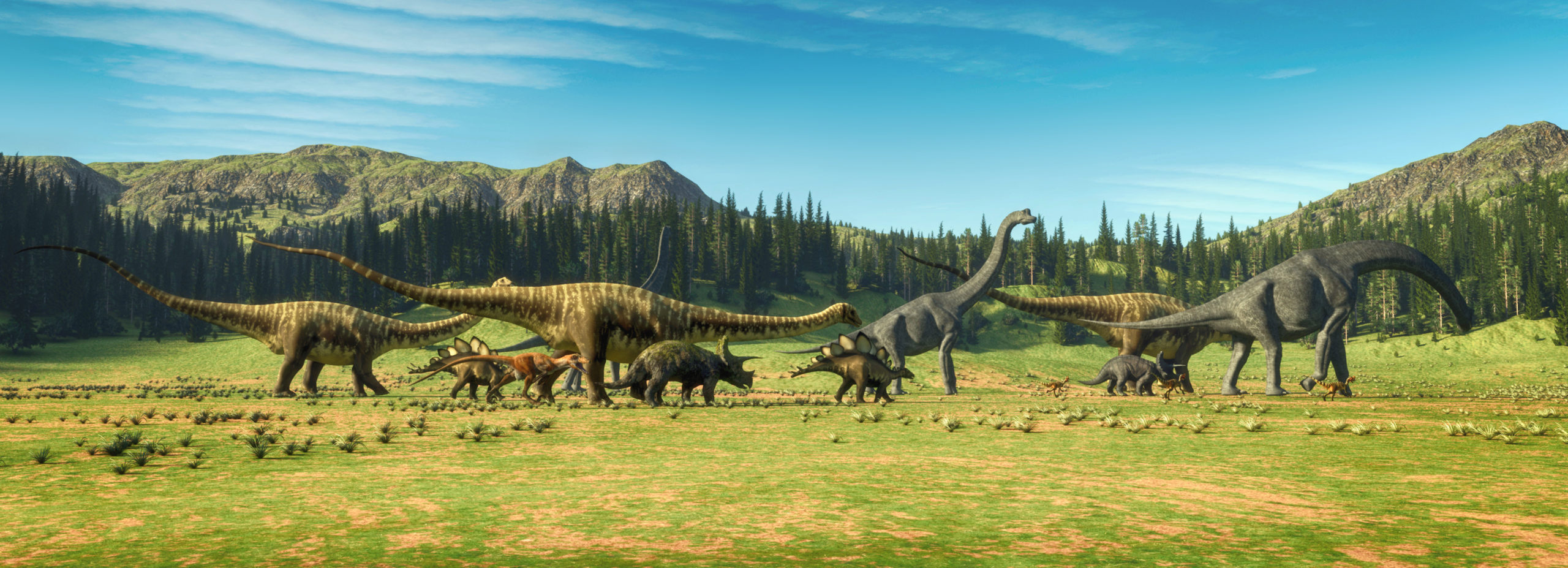Do Dinosaurs Actually Exist?
A video of a conspiracy theorist questioning the existence of dinosaurs has gone viral recently. The creator of the video challenges viewers to put their critical thinking skills to the test and asks, “If dinosaurs actually existed, wouldn’t their bones be everywhere?”
While it may seem like an odd approach to critical thinking, disregarding all the evidence we have that dinosaurs existed because we haven’t found even more evidence is indeed an interesting question. However, a quick trip to Google would reveal that this question has been answered many times over.
Dinosaur Fossils Found in Various Locations
First off, dinosaur fossils have been discovered on all continents. However, their distribution is not even, and this has nothing to do with a conspiracy to plant bones in specific locations. The reason for uneven distribution is that fossilization is a rare phenomenon that occurs only under specific circumstances.
When an animal dies, for it to become fossilized, it needs to be buried by sediment and then covered by multiple layers of sediment. With increasing pressure, these layers compress to form sedimentary rock. During this process, minerals seep into the animal bones and eventually turn them into stone.

Due to the sediment buildup required for fossilization, most of the fossils we have found are in areas where the creatures were submerged in water, such as seas and rivers, where sand and mud could wash over the remains. Dinosaurs that die above ground rarely become fossilized.
According to Dr. David Button, a dinosaur researcher at the Natural History Museum, “Most of the dinosaur fossils we find are from animals that were living near to a lake or river. Some died shortly before the area flooded and covered their remains in mud and silt. Others were washed into a river by heavy rain.”
The Complexity of Fossil Formation
Fossilization, the process by which organic remains are preserved as fossils, is an intricate and often fortuitous event. It is essential to understand that not all organisms that die become fossils, and this selective process plays a critical role in why we don’t find dinosaur bones everywhere.
For fossilization to occur, specific conditions must align perfectly. When a dinosaur or any other organism dies, the body must be rapidly buried by sediment, which acts as a protective blanket against scavengers and decomposition. This initial burial is a crucial step in the preservation process. In many cases, animals that die on the surface decay or are consumed by predators, leaving no trace behind.
Once buried, the remains need to be covered by layer upon layer of sediment over an extended period. The weight of these sediment layers, combined with the pressure from the overlying rocks, causes the sediment to compact and harden into sedimentary rock. This rock encases the organic material, effectively sealing it off from external factors that would lead to its decay.
During the process of fossilization, minerals from groundwater slowly infiltrate the organic material. These minerals gradually replace the original organic molecules, transforming the remains into stone. This mineralization process preserves the structure of the bones or other organic matter down to the microscopic level, which is one of the reasons why fossils can provide such detailed information about ancient organisms.
Given the complexity of these requirements, it becomes evident why we don’t find dinosaur fossils everywhere. Fossilization is a rare phenomenon that depends on a series of specific geological and environmental factors aligning perfectly. As a result, most dinosaur fossils are discovered in regions where these conditions were met, such as near ancient lakes, rivers, or in sedimentary rock formations. This scarcity only adds to the excitement and value of each fossil discovery, as it represents a glimpse into Earth’s ancient past that was almost lost to time.
The Fascinating World of Dinosaurs
Dinosaurs have always captured the imagination of both young and old alike. The idea of these gigantic reptiles that roamed the Earth millions of years ago is awe-inspiring. Thanks to the extensive research and discoveries made by paleontologists, we have been able to piece together a wealth of information about these ancient creatures.
Unlocking the Mysteries of Dinosaurs
While we may never have a complete understanding of the dinosaur realm, scientists have made remarkable progress in uncovering their secrets. Through careful study of fossilized remains, scientists have been able to determine crucial details about these long-extinct creatures. These discoveries have shed light on their anatomy, behavior, and even their demise.

Some key findings include:
- Size: Dinosaurs came in all shapes and sizes, from small, bird-like creatures to colossal giants like the long-necked Diplodocus and the fearsome Tyrannosaurus rex.
- Feathers: Recent discoveries have shown that many dinosaurs likely had feathers, challenging our conventional perception of these creatures as scaly reptiles.
- Walking and Running: By examining dinosaur tracks and studying the structure of their bones, scientists have been able to determine how these fascinating creatures moved and interacted with their environment.
- Diet: Through fossilized stomach contents and the shape of their teeth, researchers have been able to infer what dinosaurs ate, ranging from herbivorous dinosaurs munching on plants to carnivorous hunters preying on other dinosaurs.
- Extinction: The study of the asteroid impact that occurred approximately 66 million years ago has provided conclusive evidence that this catastrophic event led to the extinction of the non-avian dinosaurs, making way for the rise of mammals.
Uncovering the Past with Paleontology
One of the most exciting aspects of modern dinosaur research is the role of technology in advancing our understanding of these ancient creatures. High-resolution imaging techniques, have revolutionized the field of paleontology. These tools allow scientists to peer inside fossilized bones and uncover intricate details about the dinosaurs’ anatomy. With such technologies, researchers can reconstruct the 3D structure of bones, revealing clues about how these animals lived, moved, and evolved.
Paleontology, the study of fossils, has played a crucial role in unraveling the mysteries of dinosaurs. By carefully examining fossilized bones, teeth, footprints, and even preserved organic matter, paleontologists have been able to reconstruct the prehistoric world and gain insights into the lives of dinosaurs.
Dinosaurs and Climate Change
The study of dinosaurs is not just about uncovering the past but also about gaining insights into the Earth’s changing climate. By examining the fossil record, scientists can infer information about the environmental conditions that dinosaurs lived in. This includes data on temperature, atmospheric composition, and even geological events.
Some researchers use the geochemical analysis of dinosaur bones to understand ancient climate variations. For instance, the ratio of stable isotopes in dinosaur teeth can provide clues about the temperature and water sources available during their lifetimes. This information helps us piece together the climatic history of the planet and how it may have influenced dinosaur evolution.
Protecting and Preserving Fossils for the Future
Preserving fossils is of utmost importance for future generations. Museums and research institutions around the world are working diligently to protect these precious artifacts and make them accessible to the public. Through careful excavation, digital preservation, and education initiatives, the wonders of the dinosaur world can be shared with people of all ages.

It is also crucial for individuals to play a role in safeguarding fossils. When stumbling upon a fossil in the field, it is important to leave it undisturbed and record its location. Reporting the finding to local authorities or paleontological organizations ensures that professionals can properly document and study the discovery.
Educational Outreach and Dinosaur Museums
The importance of educating the public about dinosaurs cannot be overstated. Dinosaur museums around the world play a vital role in this regard, providing visitors with an immersive learning experience. These institutions showcase not only the spectacular fossils but also the scientific processes behind dinosaur research.
In addition to museums, educational outreach programs, and events have been instrumental in fostering interest in paleontology. Dinosaur-themed workshops, lectures, and even fossil digs allow individuals of all ages to engage with the field of paleontology firsthand, inspiring a sense of wonder and curiosity about Earth’s ancient past.
Continuing the Quest for Knowledge
The world of dinosaurs is vast and ever-evolving. New discoveries are made each year, expanding our understanding and challenging our previous assumptions. Ongoing research into dinosaur biology, behavior, and their interaction with the environment will undoubtedly reveal further insights into these captivating creatures.
So, the next time you come across a video questioning the existence of dinosaurs, remember the wealth of evidence that supports their existence. Dinosaurs truly walked the Earth, leaving behind a fascinating legacy that continues to captivate our imaginations.

This Site Was Inspired By An Interest in Protecting the Environment:
We had the privilege and joy of learning from Dr. Charlie Stine who instilled a love for the natural world through incredible field trips with the Johns Hopkins Odyssey Certificate program in Environmental Studies. At the time, the program was endorsed by the Maryland Department of Natural Resources. Sadly, after Dr. Stine retired, the program was phased out. We hope that we honor his legacy by shining a bright light on environmental issues and sharing good news about the success of various conservation programs when possible.

